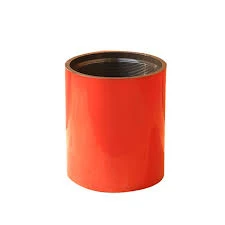- Afrikaans
- Albanian
- Amharic
- Arabic
- Armenian
- Azerbaijani
- Basque
- Belarusian
- Bengali
- Bosnian
- Bulgarian
- Catalan
- Cebuano
- Corsican
- Croatian
- Czech
- Danish
- Dutch
- English
- Esperanto
- Estonian
- Finnish
- French
- Frisian
- Galician
- Georgian
- German
- Greek
- Gujarati
- Haitian Creole
- hausa
- hawaiian
- Hebrew
- Hindi
- Miao
- Hungarian
- Icelandic
- igbo
- Indonesian
- irish
- Italian
- Japanese
- Javanese
- Kannada
- kazakh
- Khmer
- Rwandese
- Korean
- Kurdish
- Kyrgyz
- Lao
- Latin
- Latvian
- Lithuanian
- Luxembourgish
- Macedonian
- Malgashi
- Malay
- Malayalam
- Maltese
- Maori
- Marathi
- Mongolian
- Myanmar
- Nepali
- Norwegian
- Norwegian
- Occitan
- Pashto
- Persian
- Polish
- Portuguese
- Punjabi
- Romanian
- Russian
- Samoan
- Scottish Gaelic
- Serbian
- Sesotho
- Shona
- Sindhi
- Sinhala
- Slovak
- Slovenian
- Somali
- Spanish
- Sundanese
- Swahili
- Swedish
- Tagalog
- Tajik
- Tamil
- Tatar
- Telugu
- Thai
- Turkish
- Turkmen
- Ukrainian
- Urdu
- Uighur
- Uzbek
- Vietnamese
- Welsh
- Bantu
- Yiddish
- Yoruba
- Zulu
vacuum hose coupling
Understanding Vacuum Hose Couplings A Comprehensive Guide
Vacuum hose couplings are essential components in various industrial and automotive systems that utilize vacuum technology. These couplings are designed to connect sections of vacuum hoses, facilitating the transfer of gases or liquids while maintaining an airtight seal. In this article, we will explore what vacuum hose couplings are, their applications, types, and key considerations when selecting the appropriate coupling for your needs.
What Are Vacuum Hose Couplings?
Vacuum hose couplings are fittings that enable the connection of two or more vacuum hoses. They ensure that the system maintains a vacuum without leaks, effectively transmitting negative pressure and preventing the entry of external air or contaminants. These couplings are crucial in applications where even a small air leak can lead to inefficiencies, reduced performance, or failure of the system.
Applications of Vacuum Hose Couplings
Vacuum hose couplings find applications in a wide range of industries. Some common uses include
1. Automotive Industry In vehicles, vacuum systems are used for various functions such as power brakes, emissions control systems, and HVAC systems. Proper connections between hoses are vital for performance and safety.
2. Manufacturing Vacuum systems are widely used in processes like material handling, packaging, and assembly. Here, couplings help connect pipes and hoses that transport materials or maintain vacuum pressure.
3. Food Processing Vacuum sealing and packaging are common in the food industry for preserving perishables. Couplings play a significant role in ensuring that the vacuum process is efficient and contamination-free.
4. Medical Equipment In healthcare, vacuum systems are used to power suction devices and maintain sterile environments. Reliable couplings are essential to prevent leaks that could compromise patient safety.
5. Laboratories Vacuum systems are crucial in various laboratory processes, including filtration and distillation. Vacuum hose couplings help maintain the required pressure levels in experimental setups.
Types of Vacuum Hose Couplings
There are several types of vacuum hose couplings, each designed to suit different applications and systems
vacuum hose coupling

1. Barbed Couplings These are one of the most commonly used types. They have raised ridges (barbs) that grip the inner surface of the hose, providing a secure connection. They are typically made from plastic or metal and are suitable for low to medium pressure applications.
2. Compression Couplings This type uses a fitting with a nut that compresses the hose against a smooth surface. They are ideal for high-pressure applications and provide a robust seal against leaks.
3. Quick Connect Couplings These couplings allow for easy and rapid connection and disconnection of hoses without tools. They are convenient for applications requiring frequent changes in hose configuration.
4. Flanged Couplings Consisting of two flanges with a gasket in between, these couplings provide a strong and leak-proof connection for larger diameter hoses and high-pressure systems.
Key Considerations for Selecting Vacuum Hose Couplings
When choosing vacuum hose couplings, several factors should be taken into account
1. Material Compatibility Ensure that the coupling material is compatible with the substances being transported, whether gases or liquids.
2. Pressure Rating Select couplings rated for the specific vacuum pressure levels you will encounter in your application.
3. Temperature Resistance Consider the temperature range the coupling must withstand, especially in automotive and industrial settings.
4. Ease of Installation Some couplings are easier to install and remove than others. Depending on your application, you may prioritize quick-connect options.
5. Size and Compatibility Ensure the coupling size matches your hose diameters and consider standard sizes for easier replacement and maintenance.
In conclusion, vacuum hose couplings play a vital role in various applications requiring efficient and reliable vacuum systems. By understanding the types and functions of these couplings, you can make informed decisions that enhance the performance and safety of your systems. Always consider the specific requirements of your application when selecting the right vacuum hose coupling.
-
Tubing Pup Joints: Essential Components for Oil and Gas OperationsNewsJul.10,2025
-
Pup Joints: Essential Components for Reliable Drilling OperationsNewsJul.10,2025
-
Pipe Couplings: Connecting Your World EfficientlyNewsJul.10,2025
-
Mastering Oilfield Operations with Quality Tubing and CasingNewsJul.10,2025
-
High-Quality Casing Couplings for Every NeedNewsJul.10,2025
-
Boost Your Drilling Efficiency with Premium Crossover Tools & Seating NipplesNewsJul.10,2025







